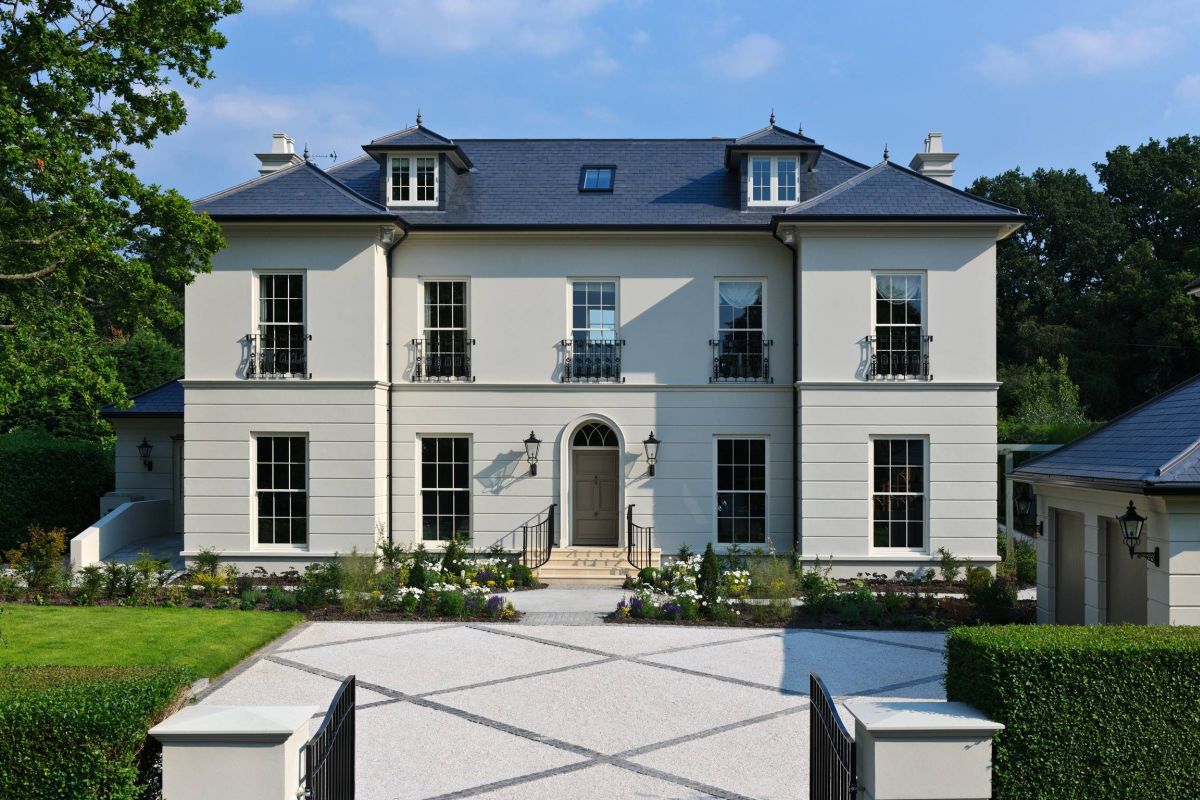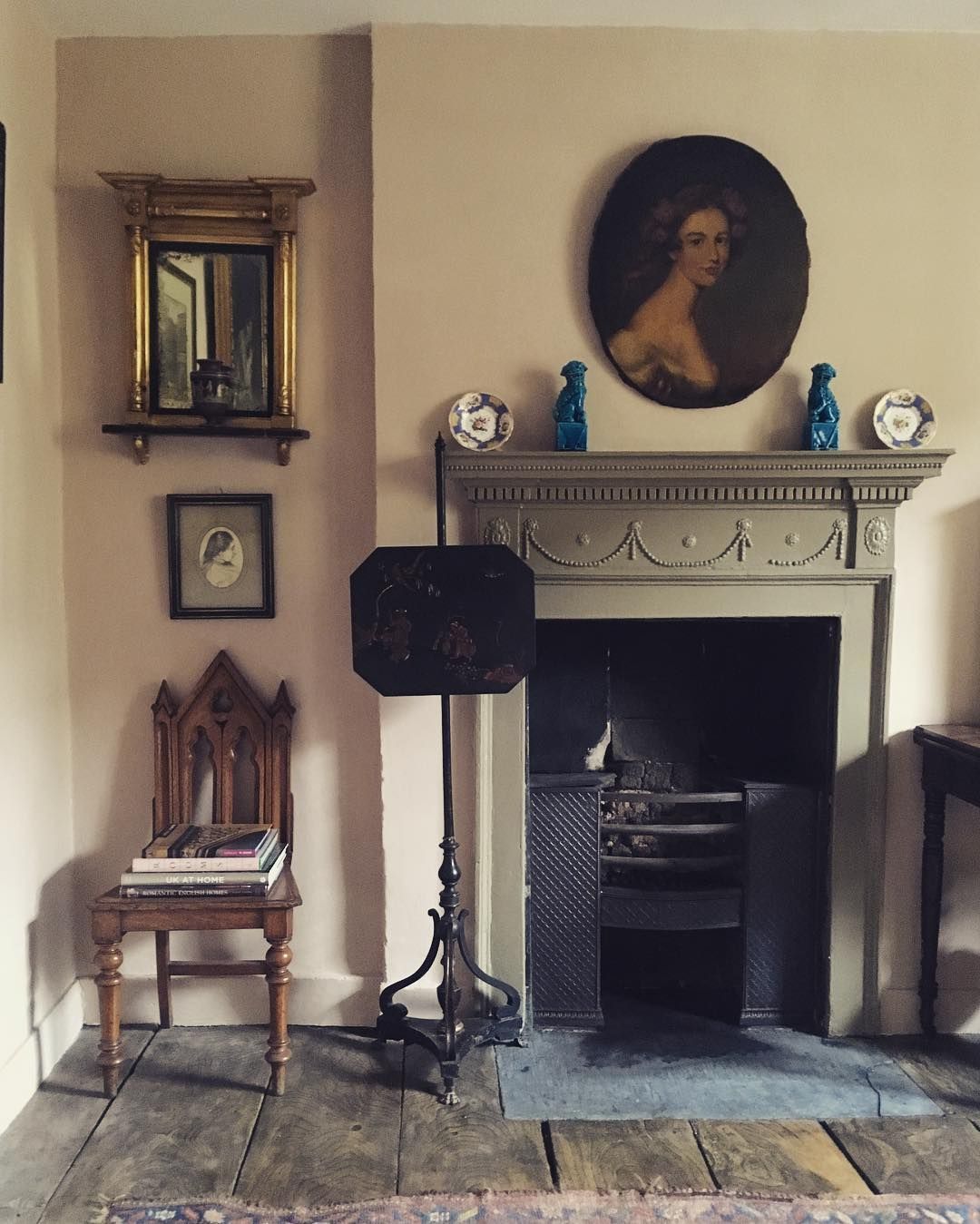Celebration Of Georgian Style Home Architecture
Georgian-style architecture has held a significant place in US design since its arrival in the 18th century. Many of the original homes have been steeped in history and have influenced architecture for generations.
Georgian-style homes focus on symmetry and order. Common features include red brick, five equal-spaced window openings, and the use of columns.
Classic Georgian Style Home Architecture
Join us as we explore some of the finest examples of Georgian home architecture.
Latin House, Risley

Brick construction is a highlight of Georgian architecture. Red brick, white trim, and window frames offer unique curb appeal. The exterior colors are a throwback to 18th-century American home styles.
Whitemarsh Island

Designed by Historical Concepts, this new Georgian home is on Whitemarsh Island, located off the coast of Georgia.
Shanks House

From Ptolemy Dean Architects and winner of the 2015 Georgian Group award, this 16th century home sits on the edge of Blackmore Vale in Dorset.
Classic Georgian Style Home

The term “Georgian” comes from the monarchs who ruled England from 1714 to 1830, all named George. During this period, English master architects Inigo Jones, Christopher Wren, and James Gibbs were inspired by the beauty and symmetry of Renaissance architecture and determined to create a version for the British people. Enter Georgian style homes.
In larger cities, tall and narrow Georgian style homes were the norm. The homes had a second floor, and it wasn’t uncommon for some to have a third floor.
These Georgian houses boasted wonderful symmetry as their main feature, whether they were small cottages or sprawling estates. Windows displayed multiple panes, standing to attention across the front of the house. Sometimes they were flanked at the corners with decorative quoins. The front door was always found at the center and often surrounded by windows or columns.
Georgian Revival Architecture

Symmetry is the main feature of the Georgian style. Architects use even-spaced windows on the facade.
Classical Neo-Georgian House

This example was inspired by Italian Renaissance architect Andrea Palladio. The home’s exterior features a large front door with a short, yet elegant staircase. Evenly-spaced windows and dormer windows are classic features of Georgian style architecture.
Decorative Elements

The single gable window at the top is this home’s focal point. With Georgian houses, the architectural styles revolve around balance. The extra window is an accent touch more than anything else. The faded brick with burgundy board and batten window trim complement the brick and white columns in front of the entryway.
Whincop Georgian Home

Symmetry is the underlying motif of Georgian home architecture. In this example, the front door serves as the center point. The dormer windows at the top and first floor windows provide overall balance. A smaller Georgian home might have a simple flat front.
Georgian Buildings

Georgian homes feature multiple windows. The various architectural styles of Georgian houses make the structures versatile. It was in smaller towns where you’d find larger homes.
Gabled Roofs

Georgian style architecture features more than one fireplace per home. There aren’t any strange chimney placements because, just like the rest of the house, all chimneys will be symmetrical with the front view – whether there are two or six.
East Coast Gabled Roofs

Red brick construction makes this example stand out. Oftentimes the classic Georgian style homes would have decorative quoins on the corners to break up the stone or brick. It helped achieve that tidy box look and was a simple way to add interest to the home’s facade.
Colonial Style

Another feature sometimes found in Georgian homes was columns. Heralding back to the Greek roots of architecture, columns made a home appear more stately and gave the entrance a little more grandeur. Nothing like welcoming guests to a clear display of your wealth.
Neoclassical Architecture

While you may not see this aspect as much in Britain, you’ll find it often in the US. Dormers might be black, white, blue, or gray, adding to the symmetrical rigidity of the home’s facade with very little effort. The white gable windows feature arched tops, a classic signature touch.
Crown Moldings

Georgian front doors are worth a closer look. Sometimes columns or long windows flank the entryway door. The front of the house looks more like a southern Colonial-style home. In many ways, crown moldings are connected to the federal style.
Understated Elegance

When a home’s architecture focuses on symmetry and clean lines, so does the landscaping.
Georgian Landscape Design

Boxwood hedges are simple to maintain and look nice against a symmetrical Georgian home.
Georgian Foyer Design

In this example, the interior takes advantage of everything rich and luxurious. You’ll find elegant details like patterned marble floors and delicate looking architectural accents.
Rustic Living Areas

The wood planks give the decor in this example a rustic flavor. Walls and floors aren’t the only places in Georgian homes where you’ll find extra stylish accents.
Small Panes

Most Georgian-style living areas have abundant natural light. Don’t hinder that with curtains. Embrace indoor shutters that can be folded away from the windows during the day and provide privacy at night.
Classic Living Room

Georgian interiors boast gold framed mirrors and pieces with floral detail.
Kitchen Area

Georgian homes have deep-set windows and accent materials such as brick or stone walls. Many feature an extra sitting room with a fireplace.
Georgian Living Areas

Early Georgian homes featured muted color schemes. Common wall colors included burgundy, blue-grays, and greens. Over time lighter colors like soft pink, greys, and beiges became prevalent.
Open Living Room Layout

The typical Georgian living room is large, allowing for plenty of furniture.
Frequently Asked Questions (FAQ)FAQ
What Is The Georgian Order?
A consistent set of rules applied to architecture, material culture, and living styles. The homes are symmetrical inside and out. Each room has a designated function. The hall is an entrance vestibule instead of a bustling center in a traditional home.
When Did Georgian Revival Emerge In The US?
Georgian Revival re-emerged in 1876. It wasn’t until after WWI that the style became common on the West Coast. Early revival homes copy the proportions of the original style. Today, the term “Georgian” is used as a synonym for “symmetrical.”
When Did Neo-Georgian Architecture Emerge?
The architectural style emerged in the 19th and 20th centuries. It’s not a different architectural style. It’s a rehash movement that followed the same principles and guidelines as Georgian architecture.
What Is A Characteristic Of A Scottish Georgian House?
A house with a hip roof and small window openings is typical of early Scottish-Georgian homes. The homes also feature dado rails between the walls.
Can A Georgian Home Have Clerestory Windows?
The size and amount of shading will impact clerestory window installation. Also, you’ll need to include in your measurements the distance between the window and the soffit.
